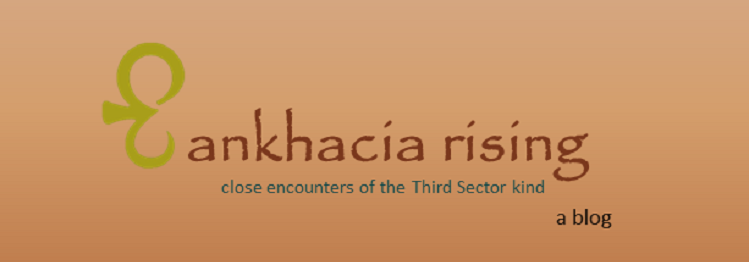Plug-in to bridge philanthropy
/Like a lot of people, I have a love-hate relationship with technology. When it’s working right, I feel like the most intelligent, invincible person.
But when it’s not, and I can’t figure out what’s going on, my intelligence and my very right to be allowed within striking distance of a keyboard is called into question – at least that’s what it feels like when I call the help desk and find out it’s something seemingly minor, like a de-activated plug-in on my website.
I didn’t understand what that was until I started blogging and had to remember to go into my dashboard and update them periodically. You see, a plug-in is programming code that fixes or updates software to improve performance or conduct new functions.
Unbeknownst to me, there was a function on my blog that wouldn’t work because this plug-in wasn’t downloaded or activated. Took me forever to discover that and a lot of headache too. Thankfully it didn’t take my site down and all of the work I’d done with it.
Connecting and cultivating new donor prospects to your organization’s mission is as important to the existence of your organization as a plug-in is to enhancing the performance of a website. Creating a program that continually brings in new people to engage with your organization so they can live their philanthropy is an essential bridge-building action.
In my free eBook, “Fundraising in Primary Colors: The RYB Framework to Nonprofit Sustainability,” I describe three essential components of resource development in nonprofit organizations. The first “Roots” the organization’s efforts in a solid mission and vision that anchors its culture of philanthropy.
The second identifies the “Yeomen”—the board, executive director and development director – that work together as a team to advance the organization’s fundraising priorities. The third is the process by which the first two integrate to “Build Bridges” to financial sustainability for the organization and for its prospects to exercise their philanthropy.
This “Build Bridges” component has four phases:
1. Fundraising Readiness – Resource Development Office formation and management
2. Program Design and Development, Marketing and Evaluation
3. Resource Development Plan Implementation
4. Resource Development Plan Outcomes Evaluation
The third phase, Resource Development Plan Implementation, is where two questions are asked that particularly address the first two C’s of philanthropy, namely,
Whom do we approach and how?
What research do we need to do?
In my January post, I referenced the 4 C’s of philanthropy. Here’s what I said about connection and cultivation:
Connection:
If you have donors and volunteers, determine how they got connected with your organization. In the case of staff, ask them why they stay.
If you don’t have donors or volunteers, determine how your board members got connected. Ask them what benefits they’ve gotten from being involved and to invite people in their circles of influence for the opportunity to experience those benefits as well.
Cultivation:
Develop values-based communication approaches and engagement activities that help your donors and donor prospects get an in-depth understanding of the issues your organization addresses through its programs and particularly how their involvement with your organization can improve program outcomes.
Create opportunities for donors and donor prospects to see themselves as vested in your vision and mission through asking them to serve on committees or volunteer at events.
The ability to answer the questions posed during Phase 3 of the Builds Bridges component will depend upon how well you’ve used the plug-ins of connection and cultivation with your current and prospective philanthropists to improve the performance of your organization and embark on new endeavors.
What specific activities does your nonprofit use to connect and cultivate in order to build bridges to philanthropy?

